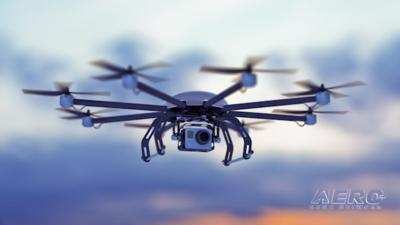Wed, Oct 26, 2016
Eighty-One Authorizations Approved To Date
The FAA began issuing Part 107 waivers and airspace authorizations to drone operators starting August 29, 2016, the effective date of the new rule. As of October 24, 2016, the agency has approved 81 authorizations for flights in Class D and E airspace, and has issued 36 waivers of Part 107 provisions to drone operators who applied after the rule’s effective date.

However, the agency has found that many applications have incorrect or incomplete information. Many applicants request too many waivers or request waivers for flights in types of airspace for which the FAA is not yet granting approvals. As a result, the agency has had to reject 71 waiver requests and 854 airspace applications.
It’s important for applicants to understand the information needed to make a successful safety case for granting a waiver.
For example, we clearly spell out the information required for a waiver to fly at night – one of the most common requests:
Applicant must provide a method for the remote pilot to maintain visual line of sight during darkness.
Applicant must provide a method for the remote pilot to see and avoid other aircraft, people on the ground, and ground-based structures and obstacles during darkness.
Applicant must provide a method by which the remote pilot will be able to continuously know and determine the position, altitude, attitude, and movement of their small unmanned aircraft (sUA).
Applicant must assure all required persons participating in the sUA operation have knowledge to recognize and overcome visual illusions caused by darkness, and understand physiological conditions which may degrade night vision.
Applicant must provide a method to increase conspicuity of the sUA to be seen at a distance of 3 statute miles unless a system is in place that can avoid all non-participating aircraft.
The other performance-based standards also list exactly what the FAA needs to consider a waiver.
Without a detailed description of how the applicant intends to meet these standards, the FAA can’t determine if a waiver is possible. Operators should select only the Part 107 regulations that need to be waived for the proposed operation. Applicants also should respond promptly to any request we make for additional information. If the agency does not receive a response after 30 days, it will withdraw the request. Operators must apply for airspace authorizations on the same web page.
(Source: FAA news release)
More News
Airbus Racer Demonstrator Makes Inaugural Flight Airbus Helicopters' ambitious Racer demonstrator has achieved its inaugural flight as part of the Clean Sky 2 initiative, a corners>[...]
A little Bit Quieter, Said Testers, But in the End it's Still a DA40 Diamond Aircraft recently completed a little pilot project with Lufthansa Aviation Training, putting a pair of >[...]
Line Up And Wait (LUAW) Used by ATC to inform a pilot to taxi onto the departure runway to line up and wait. It is not authorization for takeoff. It is used when takeoff clearance >[...]
Contributing To The Accident Was The Pilot’s Use Of Methamphetamine... Analysis: The pilot departed on a local flight to perform low-altitude maneuvers in a nearby desert val>[...]
From 2015 (YouTube Version): Overcoming Obstacles To Achieve Their Dreams… At EAA AirVenture 2015, FedEx arrived with one of their Airbus freight-hauling aircraft and placed>[...]
 Airbus Racer Helicopter Demonstrator First Flight Part of Clean Sky 2 Initiative
Airbus Racer Helicopter Demonstrator First Flight Part of Clean Sky 2 Initiative Diamond's Electric DA40 Finds Fans at Dübendorf
Diamond's Electric DA40 Finds Fans at Dübendorf ANN's Daily Aero-Term (04.23.24): Line Up And Wait (LUAW)
ANN's Daily Aero-Term (04.23.24): Line Up And Wait (LUAW) NTSB Final Report: Extra Flugzeugbau GMBH EA300/L
NTSB Final Report: Extra Flugzeugbau GMBH EA300/L Classic Aero-TV: 'Never Give Up' - Advice From Two of FedEx's Female Captains
Classic Aero-TV: 'Never Give Up' - Advice From Two of FedEx's Female Captains



